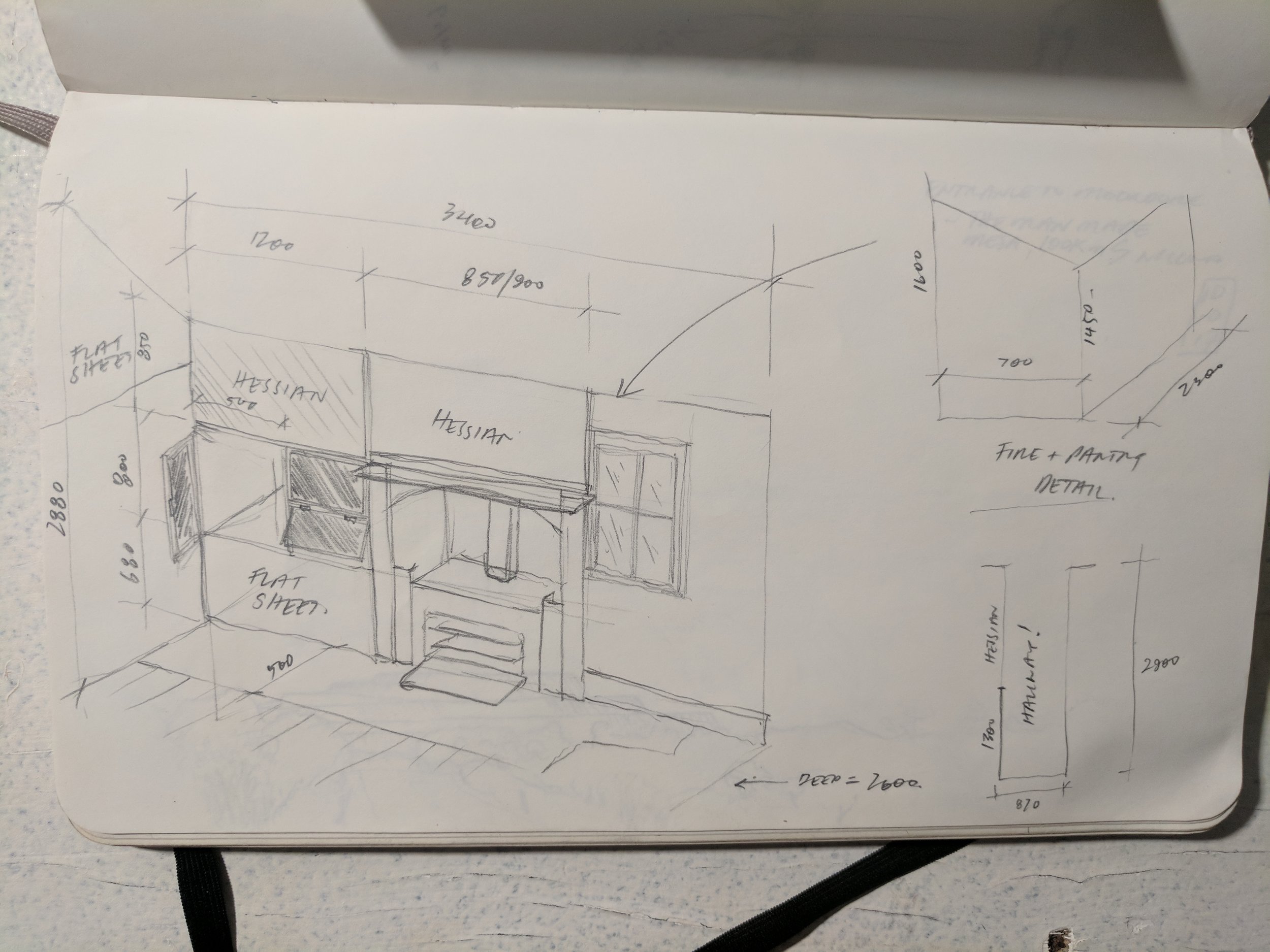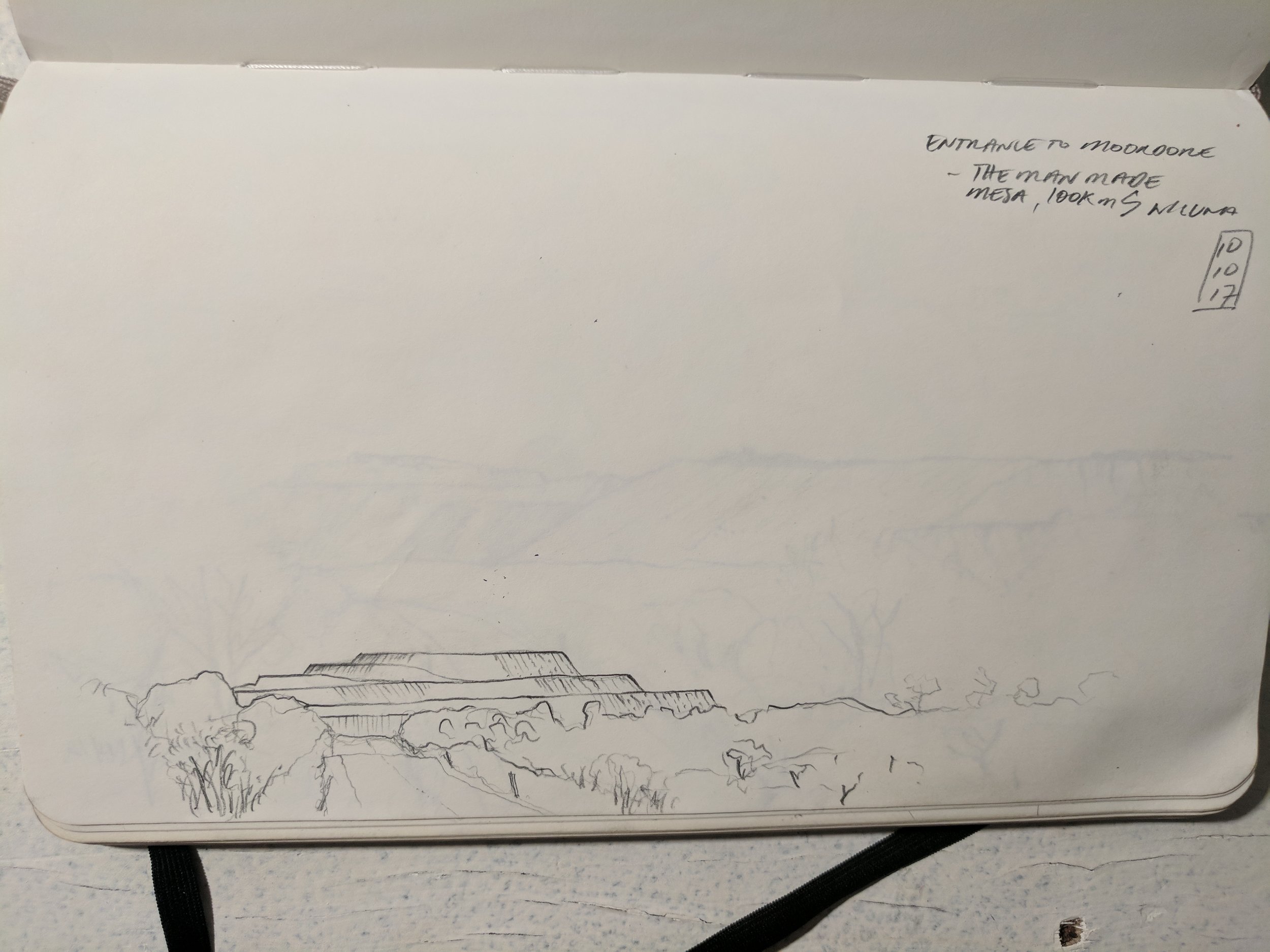






























CLICK ON THE IMAGE to read more
Traditionally home to the Wangai (Wongi/Wangkathaa) people, like many settlements in the area, their location was due to the proximity of gold, so unlike many other towns whose locality overwrites important indigenous sites, Laverton (Lay-ver-ton, does not…. Well as far as we know. Today Laverton is locally referred to as “L.A”, it is located in the rightly named ‘goldfields’. It has the closest grog shop for communities and towns since the WA border. The region of WA where many have passed through, building towns out of the dust, laying rail lines across desert-scapes and searching for fortunes. Littered in history, holes, rusty cans, glass and broken prospector dreams, it almost feels as if no piece of ground has been left untouched. Man-made mesas and hills rise high above the Mulgas. Behind a clump of Acacias is a century old brick cricket pitch, overgrown. To the unknowing eye, simply, a landscape of ‘nothing’.
Mining's hand is seen in every detail, exemplified at either end of resource influenced architecture. 1901 vs. 2017, what has changed in 116 years?
CLICK ON THE IMAGE to read on

Exploring time in architecture, two case studies of two building types one short term and one over 100 years old. CLICK ON THE IMAGE to see the full exhibition
• Traditional Owners = Wangai People
• Murchison biogeographic region
• Mean annual temps; H-27.3 L-13.2
• Mean annual rainfall; 237mm
• Population 340
• Elevation 461m
• Gold exists in greater abundance in Australia than any other place in the world
• The Coach House is the only known remaining single storey hotel in Australia designed to incorporate an enclosed carriage way

In Laverton, which is also the Sturt Desert Pea shire, we were lucky enough to meet a local who had a stash of these ready to go. He once tried to convince council that with their rates notices they should send out a seed packet so that by saturation Laverton would very much be the Sturt Pea in the shire.

An endemic plant to Australia, it is common to rocky slopes, loam and stony plains. At this time of year it is everywhere!

We didn’t really get too many flats on our trip. We had 12.5 (one was a slow leak) but this bastard was one of the 12. Thanks goes to our epic bike shop Metro Cycles in Newcastle for their expertise and gear recommendations. Legends.

It may not look like much but after not really seeing grass since Alice Springs this was heaven, bare foot rolling around heaven. Don’t take it for grated. We have heard stories after the trip of Australian native grasses being soft and luscious in lands not touched by pastoralism.

At over 115 years old this amazing building fronts a past main street. It was built using local soil to make bricks and is a sign of the aspiration that mining once brought to regional areas. It is amazing the Italian inspired columns have made it all the way to a mining town in rural WA.

The ubiquitous Donga, used prolifically throughout regional Australia as a “temporary” accommodation for miners, fly-in-fly-out workers, cooks, staff of any sort or even guest rooms. Incredibly tightly designed so no space is wasted. They rely solely on mechanical heating and cooling to be comfortable.

We had no idea what this was when we came across it but were intrigued by the odd shape and curved sections in the walls. Apparently it was a “culturally appropriate” house design for the local aboriginal mob.

We were putting about with a local as he took us to these amazingly obscure spots around Laverton, regaling us with their history, including photos and research which he carried in a folder. He pulled up to this cricket pitch describing the town that used to be just near-by. Then out of nowhere pulls a bat and ball to play what could be the first game on the pitch in 100 years.

These were the managers of the Laverton Caravan park where we stayed. We stayed in quite a few parks across the country and it is incredible the difference having generous and warm people does to the whole park! Carol and Mal imbued the park with energy, comfort and a sense of home.

Donga’s are not made for long term use in harsh conditions. The products delaminate or disintegrate in the dry heat.

Some mining companies leave huge amounts of machinery behind for when the market picks back up. These dot the country side and back roads.

These are used by mining companies to determine what is below the ground. In some parts there are hundreds of trays left, the legacy of soil testing.

They make great swimming holes, we always talked about what else they could be…a city with a big roof and a central pond? Streets for underground houses?

We would often be working at strange hours as the need to finish demanded. You can see the XXXX from the night before on the table as well as the Weet-bix box as people had their breakfast for the day.

We held our exhibition in the tourist centre as we thought that’s where the most people would be. Turns out Tourists don’t seem to want a bar of what we had to offer. After a few hours of close to zero interest we called it quits and went to visit locals who had helped us during the week.

As we rode back to our campsite and started on dinner for the night the campers who had seen us coming and going for the week pulled us up insisting on seeing the exhibition. So we pulled out our pizza box display units and had a long conversation about architecture, mining and regional Australia.

A cold snap hit with wind and rain. By now we knew it took 6kms to get warm on a cold day so Owen only had to pull this face for 6kms.

We camped a night in an abandoned building in a ghost town called Gwalia. A gold mining town originally, people would come hoping to make their fortune and build out of whatever they had. The small rooms and low roofs must have made these sweltering in the Western Australian summer. Bobbie didn’t sleep very well this night.

Note the hessian ceiling, as far as we could tell this could have been wet down to help with cooling and as an additional layer between the blazing sun.

A ephemeral lake bed, changes in vegetation signal changes in geology and soil.

A day off and the double fly tent we learnt about in Theodore makes a come back. Richard Leplastrier, a professor at our university said we should enter this for house of the year.